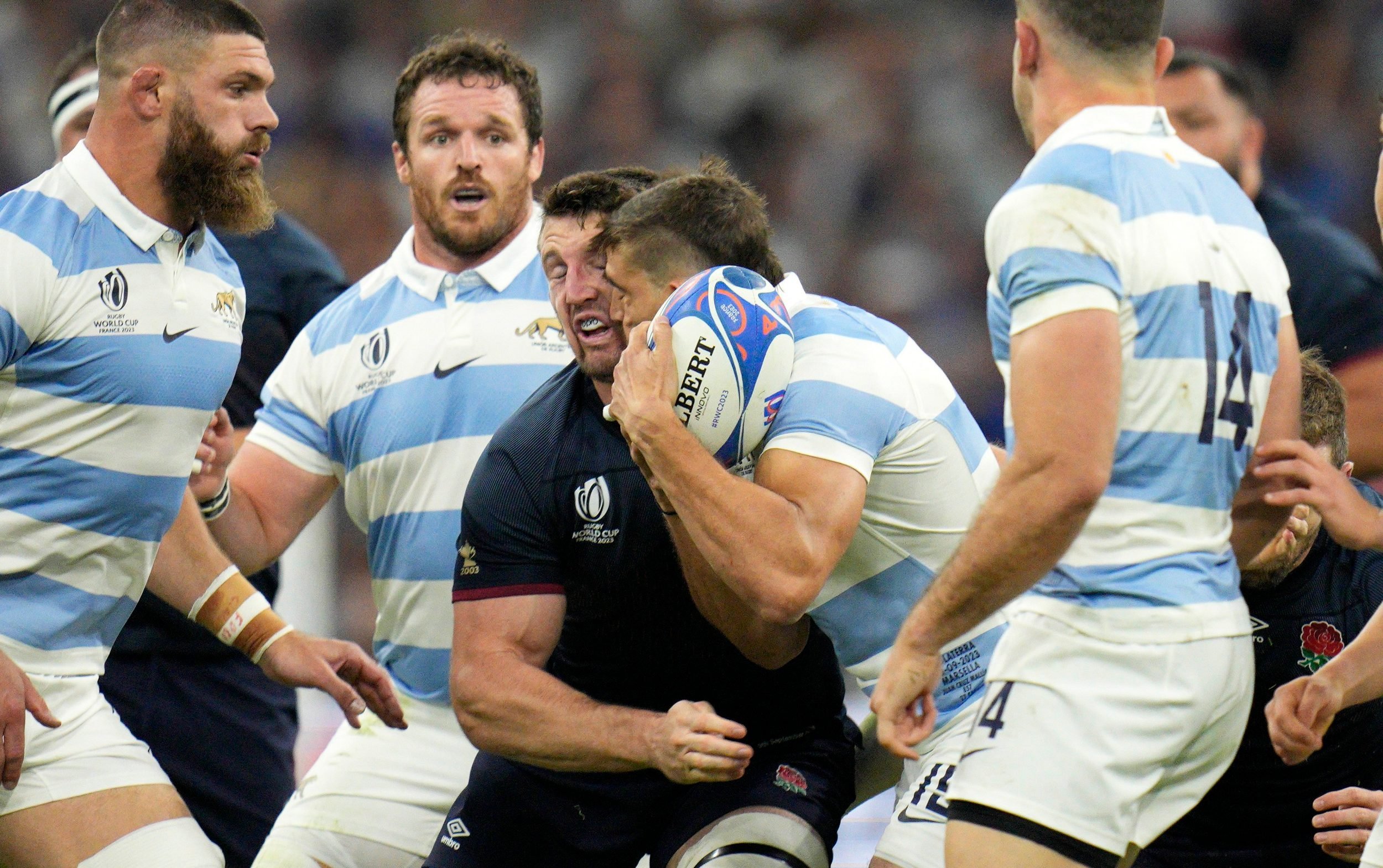World Rugby to adopt ‘gamechanging’ G-force tech to flag major head impacts
This article is from www.guardian.com
Rugby union is to become the world’s first sport to use technology to automatically withdraw players with a suspected brain injury from the field of play, the Guardian can reveal.
World Rugby is expected to confirm within the next 48 hours that it will adopt smart mouthguard technology, which measures the G-force of every head impact in real time, in all its elite matches to help make the game safer.
The technology, which works by using bluetooth to immediately alert an independent doctor whenever a player has a big collision in a tackle or ruck, will be debuted in the WXV women’s match between Italy and Japan on 13 October. It will then be rolled out into the men’s professional game in January, in time for the Six Nations.
One source told the Guardian that the technology was a “potential game-changer” because about 15% of concussions in rugby union become apparent only when a player reports them after a match.
The new approach will ensure that anyone who experiences a crunching hit that is not spotted by TV cameras – or who does not show concussion signs and symptoms straight away – will no longer remain on the pitch.
Instead, when the mouthguard registers an acceleration above 70g and 4,000 radians per second squared for men – and 55gs and 4,000 rad/s2 for women – it will immediately ping an alert to an app that is being watched by an independent doctor.
As soon as that happens the player will be taken off and will have to undergo a head impact assessment. Even if they are cleared to play, they will be checked again after the match and two days later.
Players will also be asked to wear their mouthguards in training to build up a better picture of the forces and load to which their heads are subjected over the weeks and months of a season.
It is understood that the technology – which will be added to the current head impact assessment process – will form part of a wider package of player welfare measures to be announced by World Rugby, which also includes extending the return to play guidelines for community rugby to a minimum of 21 days.
As things stand, the overwhelming majority of players wear mouthguards and the expectation is that almost all will switch to the £250 smart ones, which will be funded by World Rugby. Those who do not will become subject to the “recognise and remove” policy used in community rugby. That means if they sustain a head impact that could be a concussion they will automatically have to sit out the rest of the game, rather than undergoing the in-game head impact assessment.
World Rugby’s £4.5m investment in smart mouthguard technology and player welfare over the past three years comes as collision and combat sports continue to wrestle with how to keep players safe – and have had to deal with protracted lawsuits from former players.
In 2020 World Rugby, along with the Rugby Football Union and Welsh Rugby, were accused by more than 200 former players of failing to take reasonable steps to protect players from brain injuries caused by repetitive blows. More recently, amateur players have launched legal cases.
In an attempt to make the game safer, World Rugby has introduced a number of measures, including lowering tackle heights. However it has decided to go further after trialling the Prevent Biometric 2.0 mouthguard in English rugby as well as in the Currie Cup and Farah Palmer Cup in the southern hemisphere.
Although smart mouthguards have been around for several years, it is only recently that advances in technology have enabled data to be transmitted in real time rather than having to be downloaded after a match. They have also become smaller and more comfortable to wear, making them more acceptable to players.
The new technology is unlikely to slow the game down. At the moment there is about one head impact assessment a match on average in elite rugby, and the use of the smart mouthguards is expected to double that.
“The new approach will ensure that anyone who experiences a crunching hit not spotted by TV cameras – or who does not show concussion signs and symptoms straight away – will no longer remain on the pitch.”

